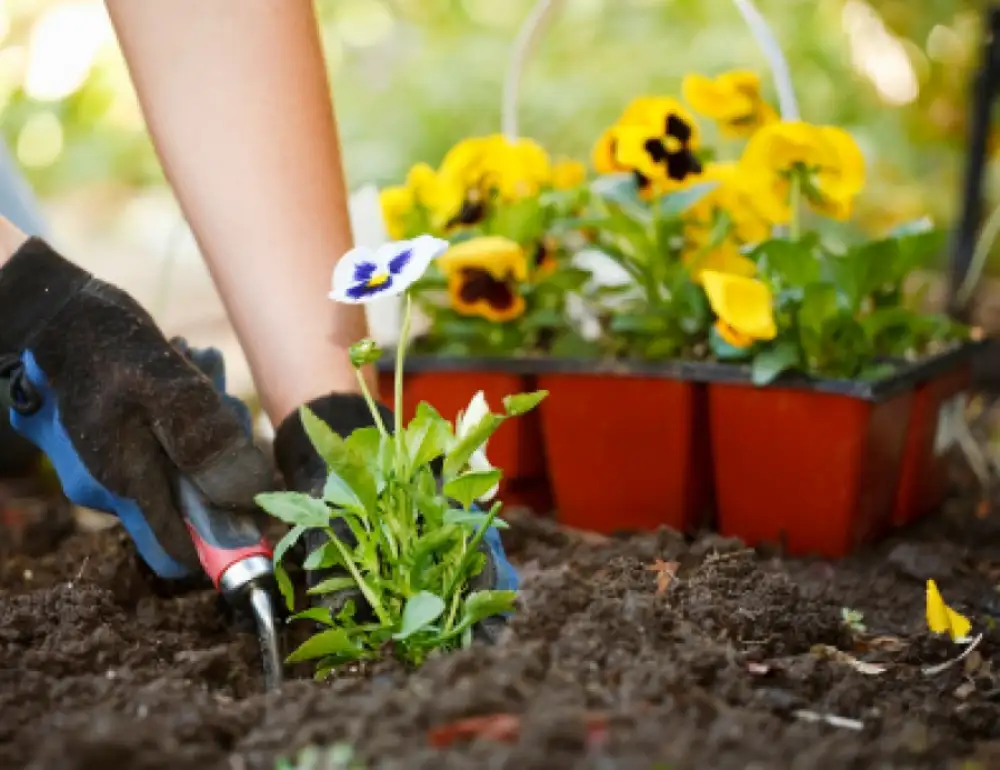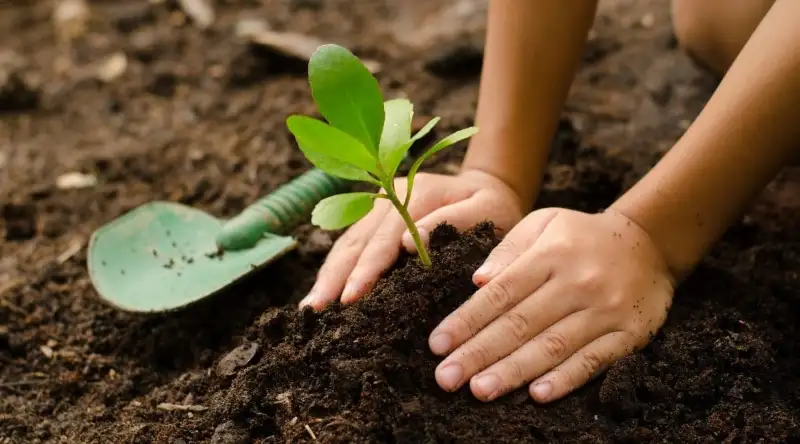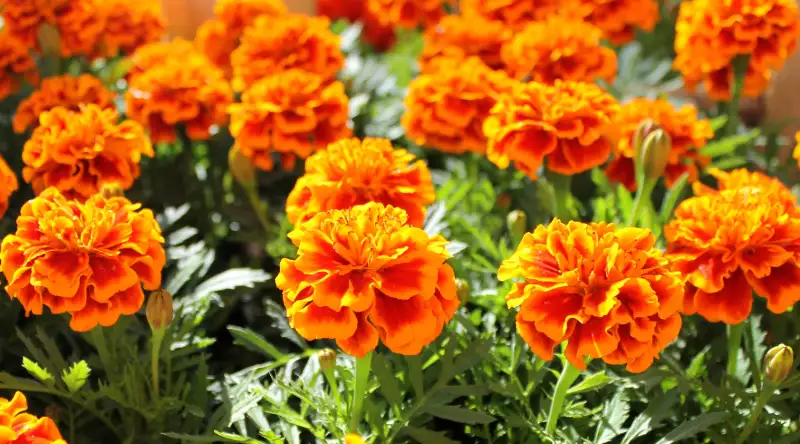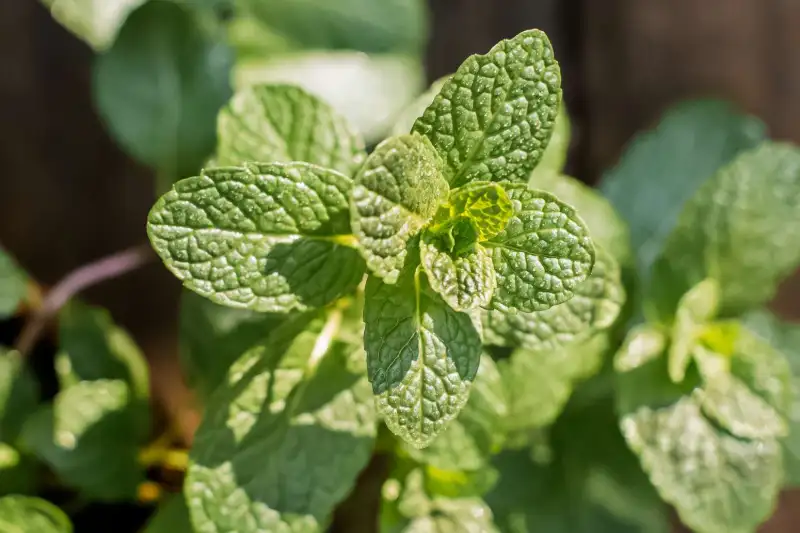Gardening for beginners is a tricky business, no doubt about it. When you think of starting a garden, we know the first question that pops into your head is, ‘how?’. Everyone’s been at your stage, and it’s okay not knowing where to begin.
It shouldn’t be that difficult, and trust us; it’s not. You have a green thumb, and we want you to see that for yourself.
With our rich experience in Gardening, we’re going to kick it off for you by showing you how to start a garden.
Once you’re aware of the basics, we’ll tell you some great tips for beginners.
After this we’ll recommended a few plants which you can grow easily.
Finally we’ll wrap it all up by showing you how to take care of your plants.
Our gardening tips for beginners help you grow a successful garden and make it look so easy. You’ll wonder why you didn’t start gardening earlier!

Steps For Beginners To Start A Garden

How to start a garden
Sometimes the first step is the hardest! From selecting plants to sun exposure, here are eight easy steps. Let’s make it easy for you as we help you make the garden you want.
1. Knowing What to Plant
You have to ask yourself, what exactly do you want out of a garden? You make it colorful with some flowering plants. Or even start your first vegetable garden to grow your food.
There is no wrong answer when it comes to this. All you need to know is what you enjoy and what keeps you returning to your garden. You buy various plants from your local nursery.
Also, you need to know the growing season for different plants, vegetables & flowers. Make sure you pick the right plants accordingly. We’ll cover more on this below.
2. Gardening Tools
Working in your home garden is much more enjoyable when you have the right tools to get by quickly. Being well-equipped is just going to make your garden feel and look unique. You’ll get more interested in gardening with this investment.
Some essential gardening tools are garden gloves, a watering can, a sprinkler, and a hose. These are self-explanatory, and here are some that you might not be familiar with, but don’t worry, we got you:
- Garden shovel: With this you dig holes for the plantation. Also, move small mounds of dirt from one area to another with this.
- Hand Trowel: Essential for transplanting bedding plants and taking out weeds. This handy tool also helps you nurture your garden.
- Pruning Sheers: This tool helps cut any extra stems or leaves that might fall out of place.
These tools are going to be a one-time investment only. Trust us; with these, you have the best plants in the neighborhood!
3. Picking Your Location
This decision is imperative. Before demarcating an area as your gardening zone, you must know how much sun your plants need. Most vegetables and flowers are sun-loving, requiring six to eight hours of sunlight.
Out of sight is out of mind. So make sure that your garden is somewhere you cross every day.
If you want to have just a few plants indoors, you should avoid planting plants that grow in full sun. There are some lovely shade plants which we’ll discuss later.
4. Prepare the Soil

The spot you picked might have some existing grass. The first thing to do is remove your grass from where you want your garden.
You can remove the grass manually or through chemicals as well. All you’re trying to do right now is create healthy soil for your garden bed.
Soil is one of the essential factors in your plant’s growth, so check your existing soil. Take a soil test for its pH levels and ensure balanced nutrient levels.
5. Prepare the Garden
It’s so fun getting your hands dirty with the soil. It makes you feel young again! Now that you know what to do with the ground, start to think about preparing a proper garden bed.
The bed should be reachable and not extended to a level where you must step inside to get to the other end. You’re not Mr.Elastic, you know, you can’t reach your garden center no matter how far away it is.
The bed should be reachable and not extended to a level where you must step inside to get to the other end. The recommended width is 3 to 5 feet, with slight gaps in between.
6. Plant

Here you get a chance to be the father of your plants. It’s stimulating to plant seeds or even transfer various plants into your garden.
Make sure you read the instructions mentioned in the seed packet. They might differ from plant to plant.
Carefully transfer your plant from its container. Place it with its roots in your prepared bed.
Just make sure to start small and don’t go overboard. You need to take ownership of this plant now.
7. Nurture
Like with children, your plants require you to nurture them. And sometimes, that’s what makes all the difference. That’s why starting with a small garden is recommended to focus on helping your plants grow.
Some essential nurturing actions include regular watering and getting rid of weeds.
Here are a few expert gardening tips for pampering your plant:
- Plow soil with your trowel. Regular plowing helps your flowers bloom, vegetables grow, and your garden look fresher. Breathe and gather nutrients.
- Use your pruning sheers to give shape to your plants. You want a clean garden. Envision yourself as a fancy garden designer and groom your plants accordingly.
- Take care of their growing conditions. Ensuring that the soil has proper nutrients and pH for your plants goes a long way.
8. Enjoy
Finally, the season which bears fruits, flowers, or vegetables, is here. That flower looks even more colorful when you put in the effort to make it grow. That vegetable tastes even juicier when you’ve nourished it the right way.
An absolute joy and ecstasy of gardening. So make sure you enjoy the process.
Useful Gardening Tips For Beginners

Now that you know how to start your garden, here are the best gardening tips to bring out that green thumb.
1. Location & Direction
Plant your garden where the sun shines. You should know where the sun rises and where it falls. You don’t want to plant and then find out that the direction of sunlight needs to be corrected.
2. Know Your Hardiness Zone
Depending on your zone, some plants grow better than others plants. It’s important to know which plants thrive well in your garden. It’s been made easier to find out with the distribution of hardiness zones. You’re good to go by just matching the zone with your plant.
3. Water Source Location
You don’t want to be making long rounds to water plants again and again, do you?
One of the things which makes your life so much easier is to pick a spot where you easily access water. Some Great tips that help make your life easier.
Even a water hose becomes annoying if you take it far away from the source daily to sprinkle some on the plants. Just make it easier for yourself; that way, you’ll be able to enjoy it much more.
4. Healthy Soil, Healthy Plant

Take it as a general rule for yourself: soil type matters. Sure, plants thrive on any soil you put them in. But they’ll bloom and flourish with soil that would boost their abilities. You use these organic soil amendments to improve your mix.
- Compost
- Aged manure
- Coconut coir
- Wood ash
Healthy garden soil doesn’t form a hard ball when squeezed and crumbles easily.
5. Drainage
Watering plants is essential, but water must find a way to reach the bottom of the ground. You don’t want water to clog the plant roots and stay there. Here are some tips to ensuring that your soil is well drained:
- Ensure a good soil mix
- Regularly loosen the soil with plowing
- Incorporate organic matter like compost or old manure
- Add shredded leaves
6. Mulch
This is a thick layer of any material placed around the soil of your plants. Mulch helps lock moisture and suppress weed growth. It also acts to improve drainage in the long term and makes the soil more fertile as it mixes into the ground.
7. Frost Dates
Plants are very feeble creatures and need help with the cold during winter.
Frost kills your plants. You need to take precautions against it; cover your plants when they’re out at night. If you live in a place with frost, you should take the necessary precautions.
8. When To Water Your Plants
Yes, plants love water, but they don’t love too much of it. You’re not here growing mangroves. You need to control the amount of water that you feed your plants.
It’s simple, push a finger two inches down into the soil. If it’s dry, it’s time to water your plant.
9. Pruning (Pinch the first buds)
This sounds too much like Rumpelstiltskin. But this practice helps your plant make more flowers and branch out with more leaves. So the first buds you see trying to bloom, nip them bravely.
10. Plan Your Layout
If you’re growing a vegetable garden and aspire to grow your own food, you need to plan it properly. Ensure you’re leaving enough pathway space between the beds to walk on.
Also, keep the veggies the same; plant like with like. After all, birds of a feather flock together.
What Should You Grow As A beginner?
3 Easy-to-grow plants as a beginner
You want your plants to grow happily, especially when you’re starting. The first planting boosts your confidence in investing more in your future gardens. Here are our picks for you that you’ll love for your new garden.
1. Pansies

These beautiful flowers are stunning while being resilient to most weather conditions. There are 300 varieties of pansies, so you get them in almost any color and shade that you want.
Grow them yourself from seeds or get them half-grown. You can also plant them yourself and give them time to flourish.
If you plan on growing them from seeds, plant them 7 to 12 inches apart in moist soil. In colder areas, they do best in sunny spots. Hence, they receive shade during the day. At the same time, if you’re warm, strategically place them in shadier locations.
2. Marigold

A foolproof plant that won’t disappoint you at all. Marigolds come in shades of orange and yellow, brightening your day. Their seed packets are available from any nursery.
These sun-loving plants grow best in moist and well-drained soil. Their growing season is just before spring. Once they bloom, they’ll continue to do so for a long duration. Nip their firstborns to encourage growth. Once they flower, you’ll love planting them all around.
3. Mint Herb

These herbs are a kitchen favorite which is something you use on a day-to-day basis. Their scent makes you crave a margarita, and you won’t get enough of this healthy herb.
Grow mint from seeds and wait for them to germinate. Another method is to grow one by cutting off another mint plant from a nursery or a neighbor.
Don’t worry if you’ll start drinking too many margaritas because the mint plant keeps up with the pace. It’s a high-speed growing plant, and you’ll always have an abundance of mint.
The plant grows in partial shade and indoors if you have a sunny space.
How Can You Tell If A Plant Is Dormant Or Dead?

Dormant or Dead?
It’s also essential in horticulture to be able to distinguish if a plant is dormant or dead.
It would bother you the most as a plant parent, seeing your plants wilt or droop. But you need to identify if they’re dormant or dead. How? We’ll tell you.
Dormant plants droop, their leaves might turn yellow, and they won’t put forward any growth. Here you use the snap or scratch test.
Scratch the surface of a thick stem and see if it’s still green inside. If it is, it’s still alive. You also snap a branch or twig; if it breaks easily and is dry from the inside, the plant is dead. If it’s flexible and hard to break, your plant is still alive and just taking a winter nap.
How To Care Plants For Beginners?

You don’t want to complicate things for yourself. Neither do we. Let’s make it simple; there are a few things you need to cater to while taking care of plants. The following is all you need to know:
- The best time to water your plants is early morning or early evening.
- Don’t water clog a dry plant: When you see a plant drying up, don’t flood its bed with water. Pace it out and start giving it just the right amount of water.
- Be patient: It’ll take time for your plants to grow and for some to heal. Just be patient in doing so.
FAQs about Gardening Tips for Beginners
1. What is the difference between garden soil and topsoil?
Topsoil is the uppermost layer of soil. It contains natural organic matter from leaves, weeds, and tree bark. These help sustain plant life. However, it isn’t enriched or amended at all. This limits its use as a growing medium.
Garden soil, on the other hand, is simply topsoil amended to enrich it and make it more suitable for plant growth.
2. Can I mix topsoil and potting soil?
You can mix topsoil and potting soil, but that doesn’t mean you should always do that. You can mix them both, but mostly with more ratio of the potting soil. Potting soil is purposely made for where drainage is essential, and weight could be a problem.
3. What should you not put in compost?
Adding meat scraps, whole eggs, or dairy products cause odor and shouldn’t be put in compost. Diseased plant material and pet feces are also something you don’t want to add to compost.
What’s Next
You must’ve seen by now that this isn’t rocket science. There is much to do, but if you do it systematically, as we’ve explained, you’re good to go. All a plant needs are for you to spend time nurturing it, and it’ll flourish independently.
Everything you need as a beginner is here. This step-by-step process ensures you succeed. Use these basic steps to start with your passion and to fuel your desire. You must feel confident about starting, and you’ll do a fantastic job.
You’re on your way to becoming an expert. But there is still a long way to go. But don’t you worry, we’ll help you get there. Check our website and find all the solutions to your questions and problems.
You’ll have more questions as you get the hang of things, and we have all your answers.
